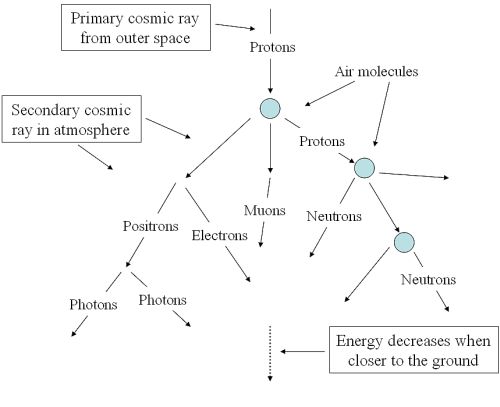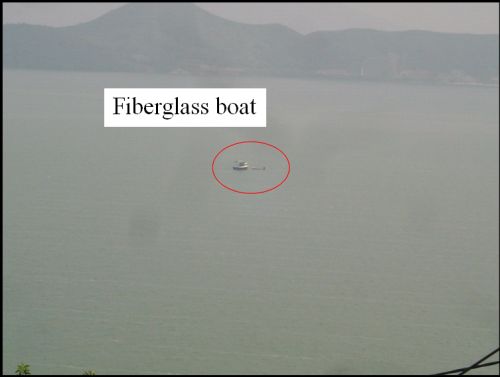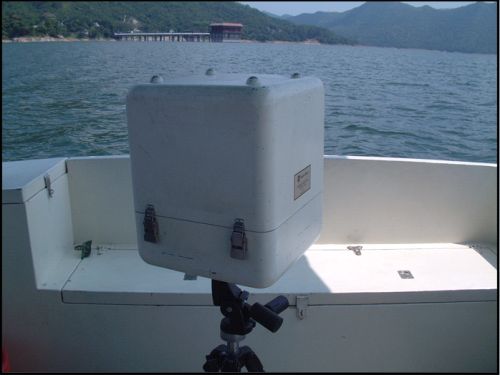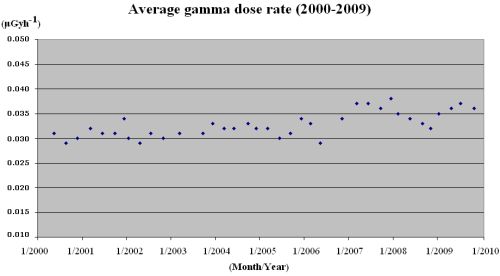How was cosmic radiation discovered? And how does the Hong Kong Observatory measure cosmic rays?
What is cosmic radiation?
Cosmic radiation from outer space is a stream of highly energetic charged particles. Until now its exact origin has not yet been fully understood. In this regard, there are still some controversies among scientists.
How was cosmic radiation discovered?
About a century ago, scientists began to measure the charges in the atmosphere. At that time, although some of them did detect ionization phenomena in the atmosphere, they believed the charges were emitted by the Earth, rather than from outer space.
In 1912, a German scientist, Victor Hess, ascended some 5,000 meters in a balloon and measured changes in the atmosphere. He found that the current detected increased with altitude, which led to his conviction that the current was caused by a strong penetrating radiation from outer space. This sort of radiation was subsequently named "cosmic rays". And because of this discovery, Victor Hess was awarded the honour of Nobel Prize in Physics in 1936.
Composition of cosmic rays
Cosmic rays consist mainly of highly energetic protons: 85% hydrogen nuclei, 12% α particles, with a small portion of electrons and some heavier atomic nuclei. Cosmic rays travel through space at almost the speed of light, some of which arrive at the Earth.
The impact of cosmic rays on human body
One thing we have to know is that the charge of the highly energetic particles of cosmic rays may be as high as 100 MeV. They can interfere with the normal function of a cell to cause diseases, and therefore pose a threat to the astronauts. If the cosmic rays penetrate the capsule of the spacecrafts, they may also undermine the precision of the instrument, affecting their operations. Therefore, careful planning needs to be taken in every space mission.
How does human body face the cosmic radiation?
While we are living on the surface of the Earth, there is no need to take any precaution against the impact of cosmic radiation. This is because the Earth has two mechanisms to protect us from cosmic rays' harm:
- The Earth's magnetic field - when cosmic rays approach the Earth, the magnetic field will deflect the charged particles. The end result is that they are mostly concentrated at the two poles of the Earth, which are very sparsely, if at all, populated. Visible manifestation of the effect of the Earth's magnetic field is the aurora observed at the poles - some of the cosmic ray particles that enter the Earth's upper atmosphere (the ionosphere) interact with the atoms, molecules or nitrogen and oxygen ions there to produce a red, green or blue light, which are observable only in the high latitude regions on Earth, demonstrating that under the Earth's magnetic field, cosmic ray intensity is higher near North and South poles, but lower close to the equator.
- Another mechanism is the Earth's protective atmosphere - The atmosphere not only can absorb most of the infrared and ultraviolet light, but also interact with cosmic rays. The high-energy particles of the so-called primary cosmic ray will collide with the oxygen or nitrogen atoms in the atmosphere and then transform into secondary cosmic ray particles.

Fig.1: Cosmic rays pass through atmosphere, weakened and eventually reach the ground
These secondary particles have sufficient energy to produce the next generation particles. By consecutive transformations, a large cluster of particles will be produced. However, most of these particles will be absorbed or self decayed when entering the atmosphere. Most of the cosmic radiation cannot reach the Earth's surface. The energies of the particles that penetrate to the surface of the Earth will be further reduced when approaching the ground.
Therefore, the atmosphere acts like a barrier to block the high-energy particles. When the cosmic rays reach the Earth's surface, the potential harmful effects have been greatly reduced.
How does the Hong Kong Observatory measure cosmic rays?
To measure cosmic rays at ground level, the most important thing is to minimize the effects of other sources of radiation originating from the land. Therefore, when taking measurement, there are certain requirements to ensure good results:
- first of all, we need to carry out the measurement in a large freshwater lake, so that the ionizing radiation of the radioactive substances in the Earth's crust will be absorbed by the water;
- the measuring point should be far away from mountains, soil and stones, its distance should be at least 1,000 meters from the shore; and
- the depth of the water is about 6 meters.
The Hong Kong Observatory first measured cosmic radiation in 1989 (Tsui et al, 1991). In Hong Kong, an ideal measurement location is at the Plover Cove Reservoir. Since 2000, the Observatory used a fiberglass boat of the Water Supplies Department quarterly to measure, at the center of the reservoir, the gamma dose rate caused by cosmic rays. The equipment used for the measurement was a High Pressure Ionization Chamber (Reuter-Stokes Model RSS-131 portable environmental radiation monitoring system). The measurement time was around 1 hour each time.

Fig.2a

Fig.2b
Fig.2a and Fig.2b: Observatory staff carrying out cosmic ray measurement at the Plover Cove Reservoir
The materials of the equipment and the fiberglass boat together with the radioactive element (potassium-40) inside the human bodies also emit radiation. Therefore, in order to obtain higher precision gamma dose rate due to cosmic radiation, we also eliminate such slight radiation effects by adding an adjustment to the measurements. Such an adjustment is about -0.0036 µGyh-1.
The following figure shows the time series of the cosmic radiations measured by HKO in 2000 to 2009. During the period, the average gamma dose rates ranged from 0.029 to 0.038 µGyh-1, while the overall average was 0.033 µGyh-1.

Fig.3: The time series of the cosmic radiations measured by HKO in 2000 to 2009
References
- Tsui, K.C., M.C. Wong and B.Y. Lee, Field Estimation of Cosmic Contribution to Total External Gamma Radiation in Hong Kong. Technical Report No. 4, Hong Kong Observatory, 1991
- Technical Report No. 20-23, 25-30 on Environmental Radiation Monitoring in Hong Kong, Hong Kong Observatory, 2000-2009
- UNSCEAR. Sources and Effects of Ionization Radiation. United Nations Scientific Committee on the Effects of Atomic Radiation, UNSCEAR 1993 Report to the General Assembly, with Scientific Annexes. United Nations, New York, 1993
- Arnold Wolfendale, Cosmic rays. Essays on Science and technology from the Royal Institution, 2001, Oxford University Press, 1-17
- A.G. Fenton, Cosmic Ray Studies Before 1946, Physics Department, University of Tasmania, GPO Box 252-21, Hobart Tasmania 7001
- P.K.F. Grieder, Cosmic Rays at Earth, Elsevier Science, 2001
- John Kraus, A Strange Radiation from Above , North American AstroPhysical Observatory (NAAPO), Cosmic Search: Issue 5, (Volume 2 Number 1; Winter (Jan., Feb., Mar.) 1980), 20-22